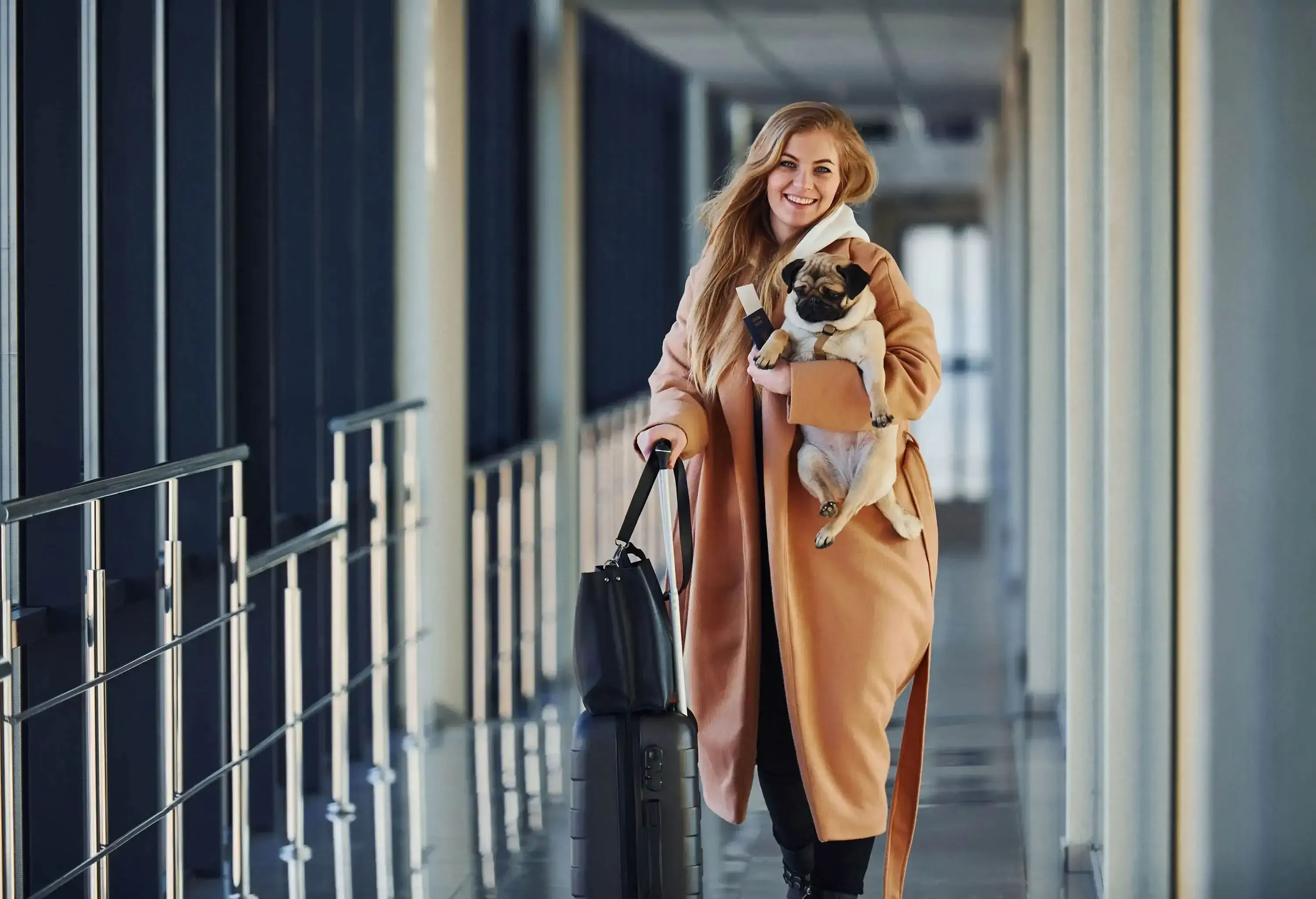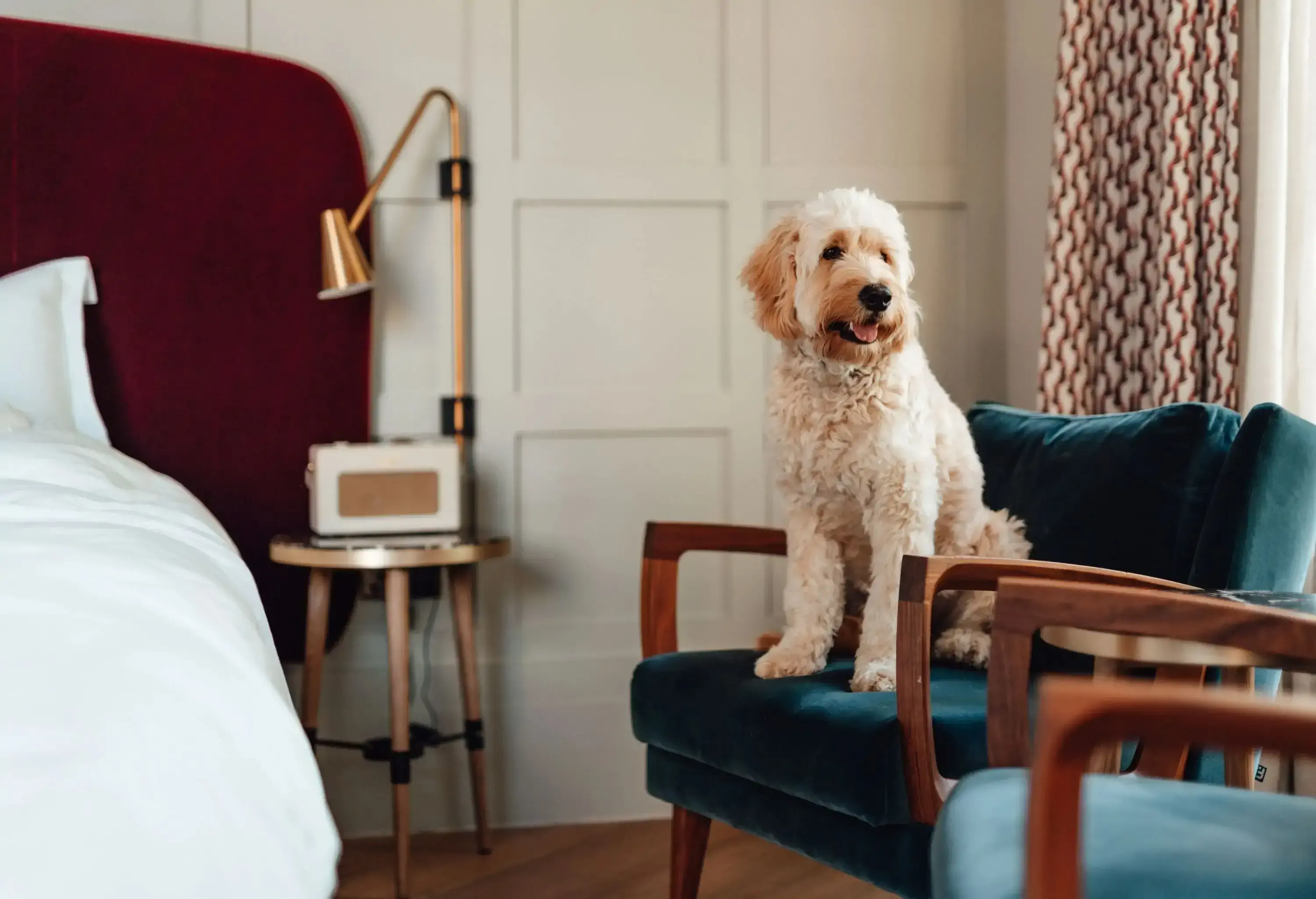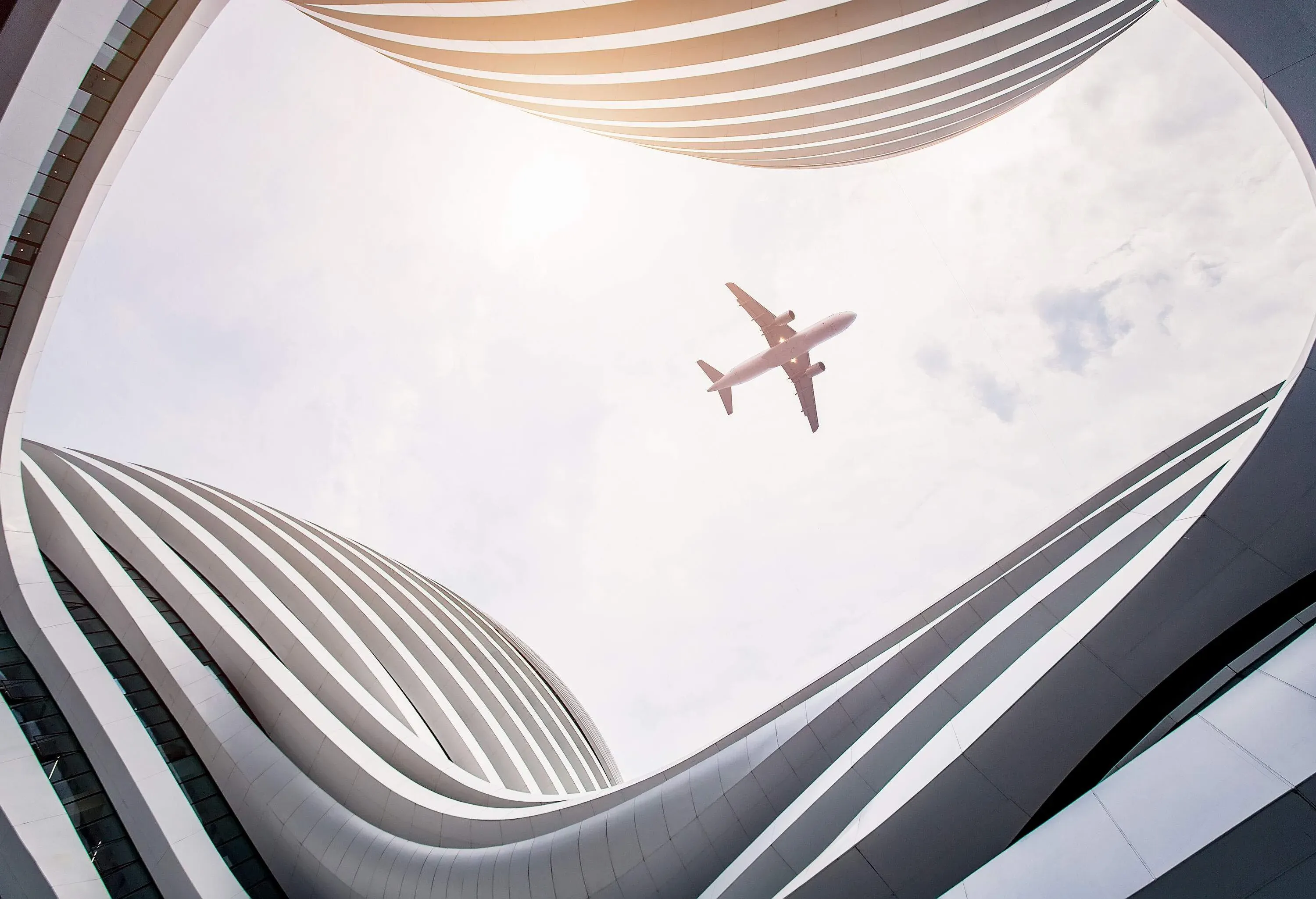Flying with a service dog isn’t just about booking a ticket and boarding a plane. From navigating airports to understanding airline policies, there’s a lot to consider. I’ve traveled on over 14 flights with my guide dog, Miss Molly, and I’ve picked up some crucial tips along the way. Here’s everything you need to know to make your journey as smooth as possible.
Arriving at the airport with a service dog: What to know
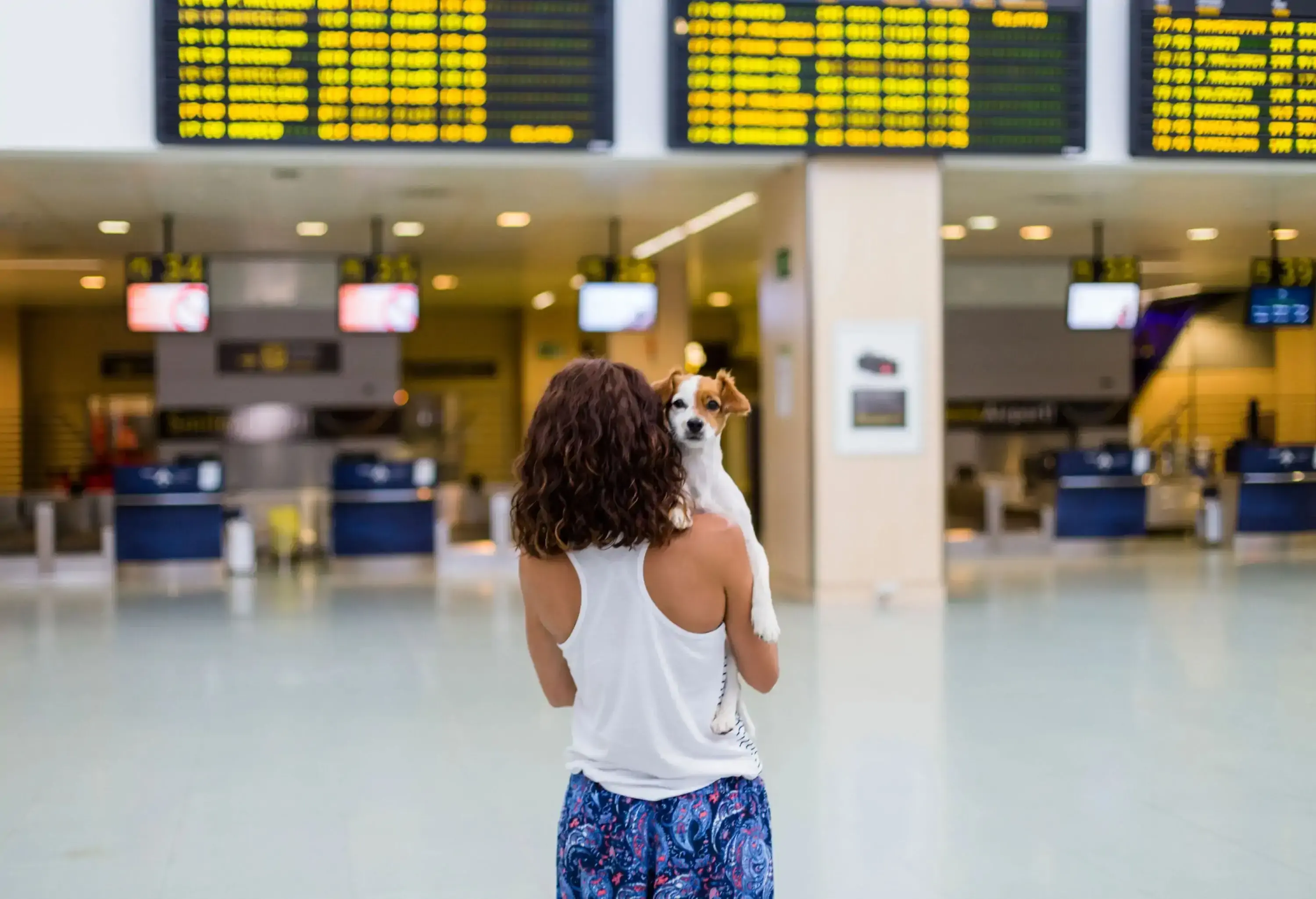
The airport can be overwhelming for both you and your service dog, so preparation is key. Here’s what to keep in mind.
Notify your airline
Always notify your airline at least 48 hours before your flight that you’re traveling with a service dog. Ideally, the sooner you let them know, the better. However, there have been times when I’ve shown up to a flight with Molly and told the airline well over 48 hours in advance about her arrival and they still haven't allocated her a seat.
Communicate with the airport
I always fly from London Heathrow Airport and they require that you inform their animal reception centre to verify your dog's documentation and microchip, although this is not typical for most US airports.
Arrive early at the airport
Arrive early because, in my experience, you can't check in in advance – as soon as I list that I have a service dog on my booking, the ability to check in online disappears because a staff member at the airport has to check Molly is the weight I stated on the booking.
Get support for security screening
Find the assistance desk, and then you can receive support when going through security.
The lack of spending areas
Every U.S. airport with more than 10,000 passengers per year is required by law (as per the Air Carrier Access Act) to have at least one post-security relief area for service animals. However, if traveling via a smaller airport or in another country, be prepared for your dog to hold it until you reach a suitable space. This is often the runway just before boarding and it can be very loud, so it is not ideal.
Keep your dog’s documentation on hand and updated
While the UK doesn’t require official proof for guide dogs, other countries may ask for vaccination records. The Animal and Plant Health Inspection Service (APHIS) provides more detailed information for U.S. travelers.
Before traveling, have your documentation ready and know the requirements for travel. For example, on Miss Molly's Animal Health Certificate (UK-specific), she needs to have a valid Rabies vaccination within the last three years, tapeworm treatment administered by a vet within five days of travel, and if she's not back within five days of the treatment, we have to renew the AHC, which means finding a vet in the country you're in. Check out my article on service dogs in hotels for more tips.
How to handle security screening with a service dog
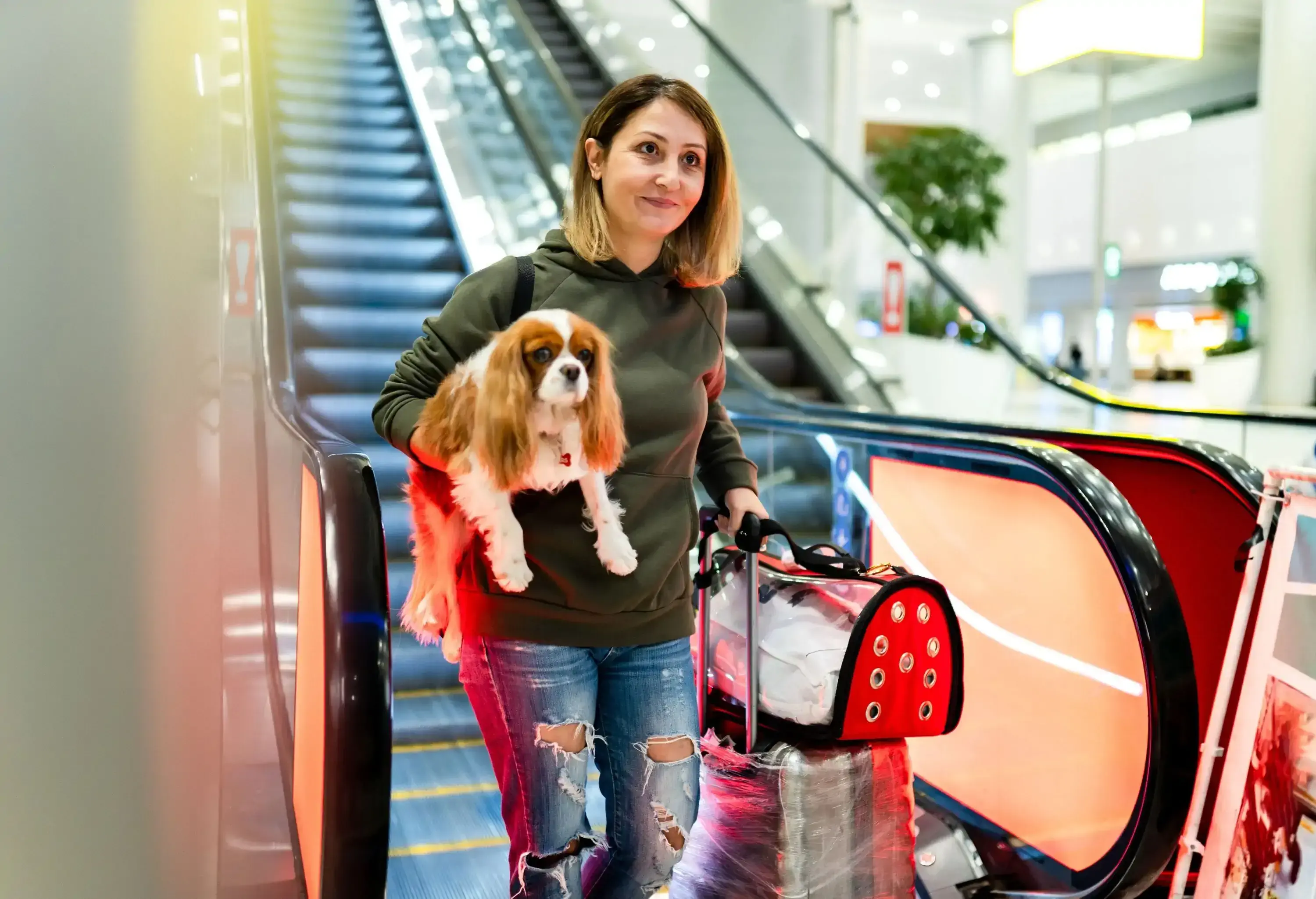
Going through security with a service dog can be unpredictable, and I often find staff unsure of what to do. In most UK and US airports, your dog will walk through the metal detector with their harness on. TSA staff may swab the harness for explosive materials. You’ll go through it separately and then be reunited with your dog immediately after.
Molly wasn’t sure about this process at first, but now she just wags her tail at security staff. If your dog is new to flying, ask your guide dog instructor about a test flight to get them used to the process.
How much does it cost to fly with a service dog?
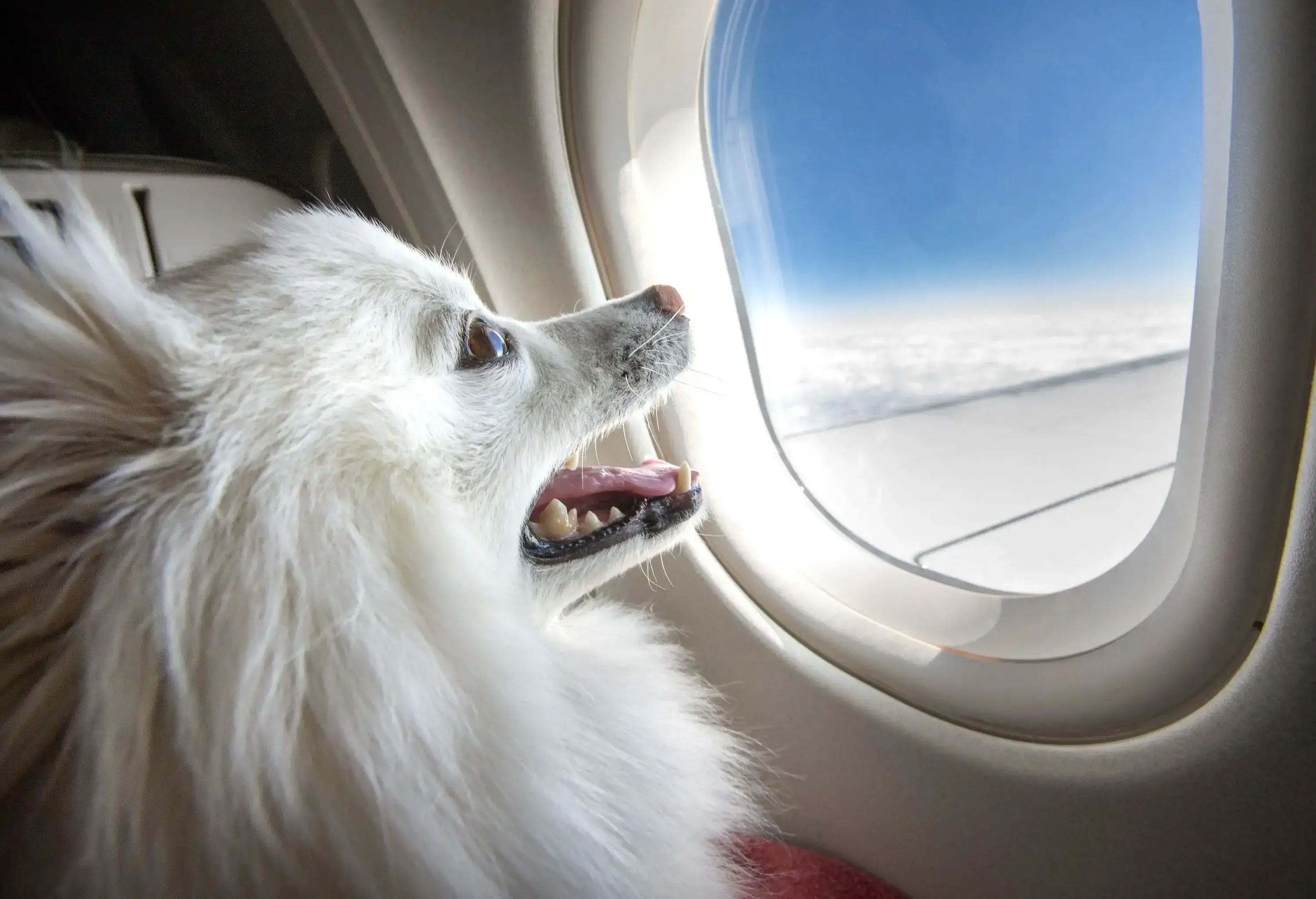
In the UK and US (due to the American Disabilities Act, or ADA), airlines cannot charge a fee for a service dog. However, some airlines may ask you to sign a liability waiver stating that you’re responsible for any damages caused by your dog. So far I've never had to sign one, though.
Be mindful of added costs, such as extra luggage fees if you’re packing dog food and travel medication such as tapeworm treatments.
Where is the service dog allowed to sit on the plane?
Airlines typically allow service dogs to sit in the footwell, but this isn’t always comfortable for large dogs like Molly who is a Labrador Retriever. Most airline policies don’t automatically allocate a seat for service dogs, which I find problematic. I personally wouldn’t take Molly on flights longer than London to New York because of this.
If space is an issue, ask the airline if they can provide an empty seat next to you when you're checking in, or whether they can upgrade you to a bulkhead seat for extra room. When I'm in a bulkhead seat, I use a dog seatbelt extender that clips onto my seatbelt, and Molly lies in front of me on her blanket.
Differences in flying with a service dog, a therapy dog, and an emotional support animal
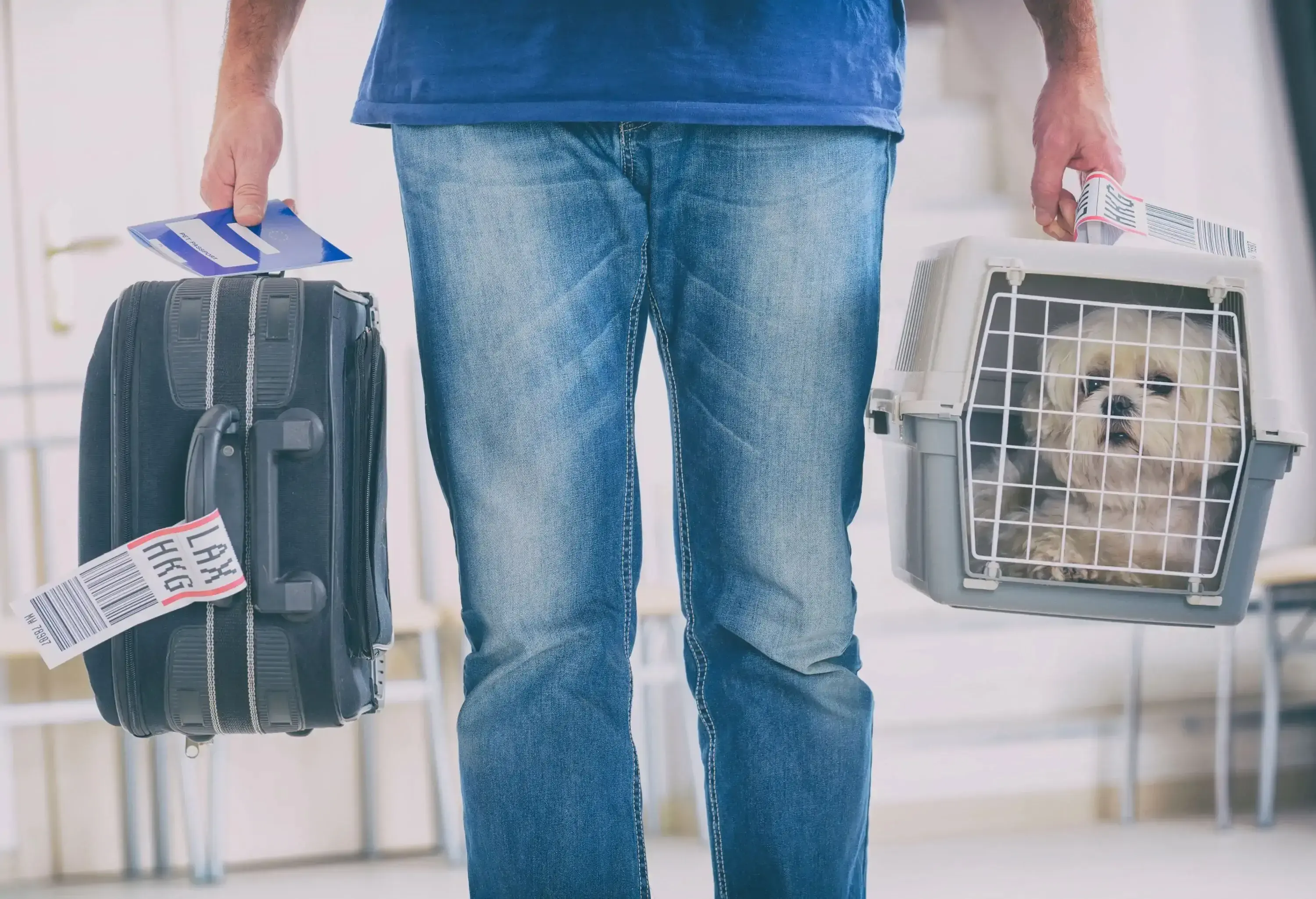
Service dogs, such as guide dogs and medical alert dogs, are legally protected under the UK Equality Act 2010, and the ADA in the US, which allows them to fly in-cabin for free as long as they meet behavior and documentation requirements.
Therapy dogs, such as Buddy Dogs, which provide comfort in places like hospitals and schools, don’t have the same legal protections and must travel under regular pet policies, with owners paying fees and using a crate. This will most likely mean that the dog has to travel in the hold, depending on its size.
Emotional Support Animals (ESAs) lost their legal airline protections in 2021, meaning they are now treated as pets. Some airlines may choose to accept them, though, so check in advance.
Differences in flying with a service dog, a therapy dog, and an emotional support animal
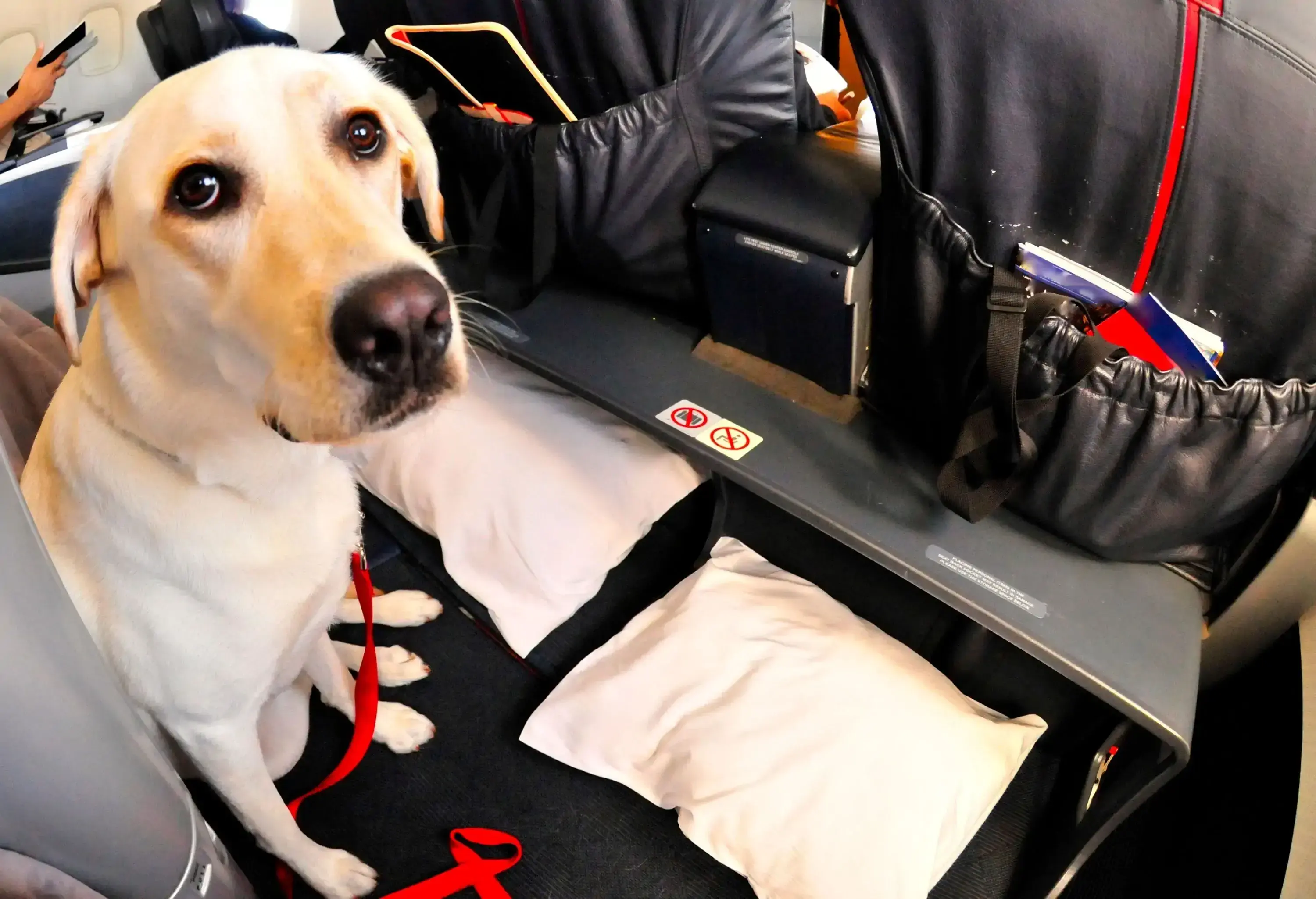
Anticipate food needs
You may want to consider not feeding your dog the morning of flying so they don't have to go to the toilet as often. Guide Dogs UK states in this dedicated article about traveling with service dogs: “If your dog is taking a long haul flight, food can be withheld for up to 24 hours if necessary.” Of course, Miss Molly gets a big feast when she lands!
I always pack Lily’s Kitchen vegetarian canned food in my checked luggage, as some countries have strict restrictions on meat products, so check before flying. If necessary, arrange to buy dog food at your destination.
Take it slow: Set up a training flight
The runway beside the plane is noisy and can be stressful for dogs. Training flights can help build their confidence. My instructor took Molly and me on a short flight from Luton to Edinburgh to assess her comfort with flying before we attempted longer journeys.
Ask for water or ice cubes
Ask your cabin staff for water. They're usually very accommodating, and I always give them Molly's pop-up water bowl to fill. You could also request ice cubes if you're worried about spillages.
Get your paperwork stamped
When you land at any airport, make sure to go through the “Goods to declare” line so they can check and stamp your paperwork. They always look at Miss Molly's certificates here. It's really useful, as the form is translated into lots of different languages.
Learn the phrase “service dog” or “guide dog” in the local language. It can come in very handy.
Can an airline refuse a service dog?
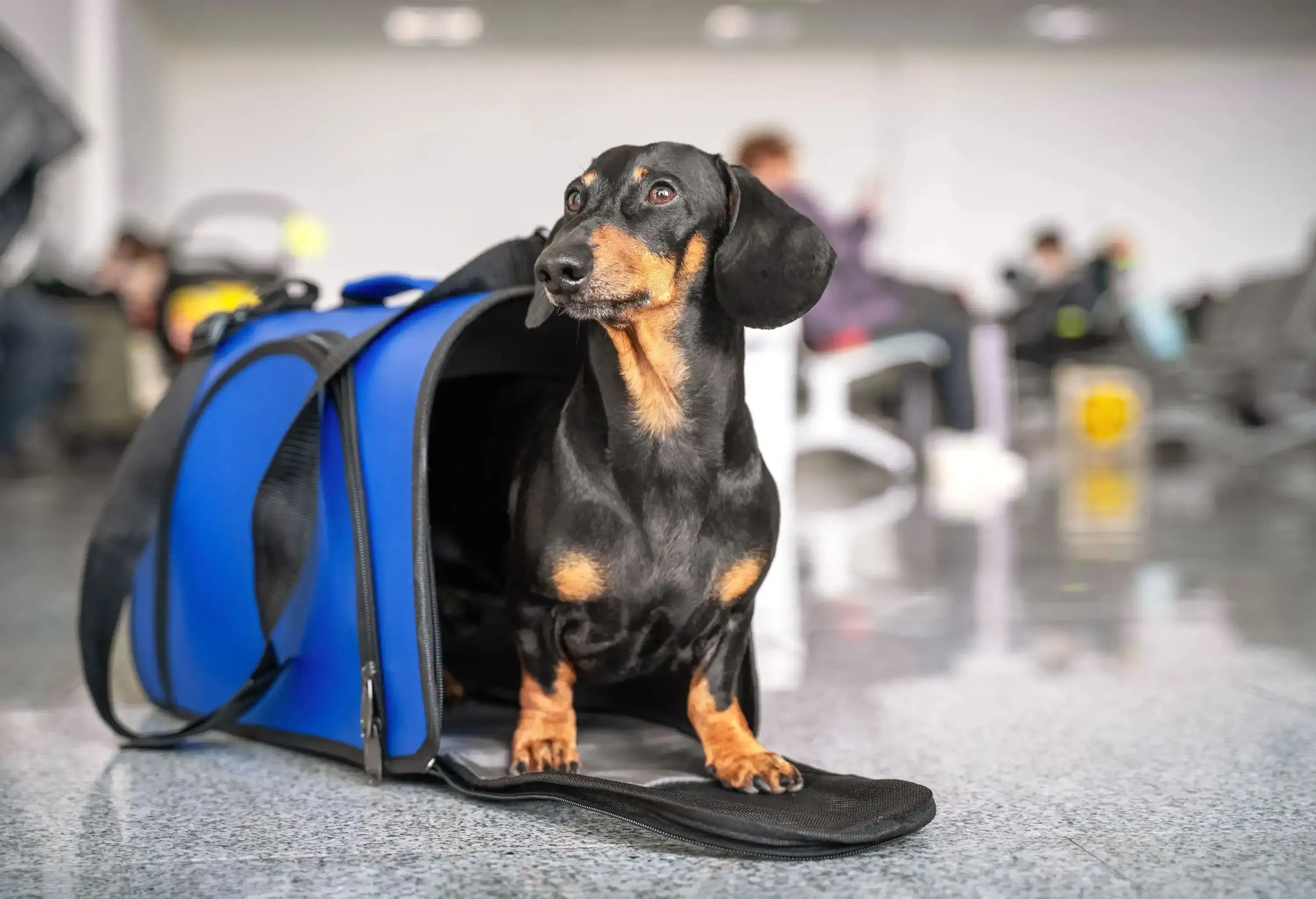
In the US, UK, and Europe, airlines must allow service dogs to fly in the cabin. However, they can refuse if:
- They're not from a recognized training organization, such as a registered IGDF or ADI school.
- You don’t provide the required documentation.
- The dog is aggressive or disruptive.
- The airline operates in a country that doesn’t permit service dogs in the cabin (e.g., some Middle Eastern carriers).
What is the best airline to fly with a service dog?
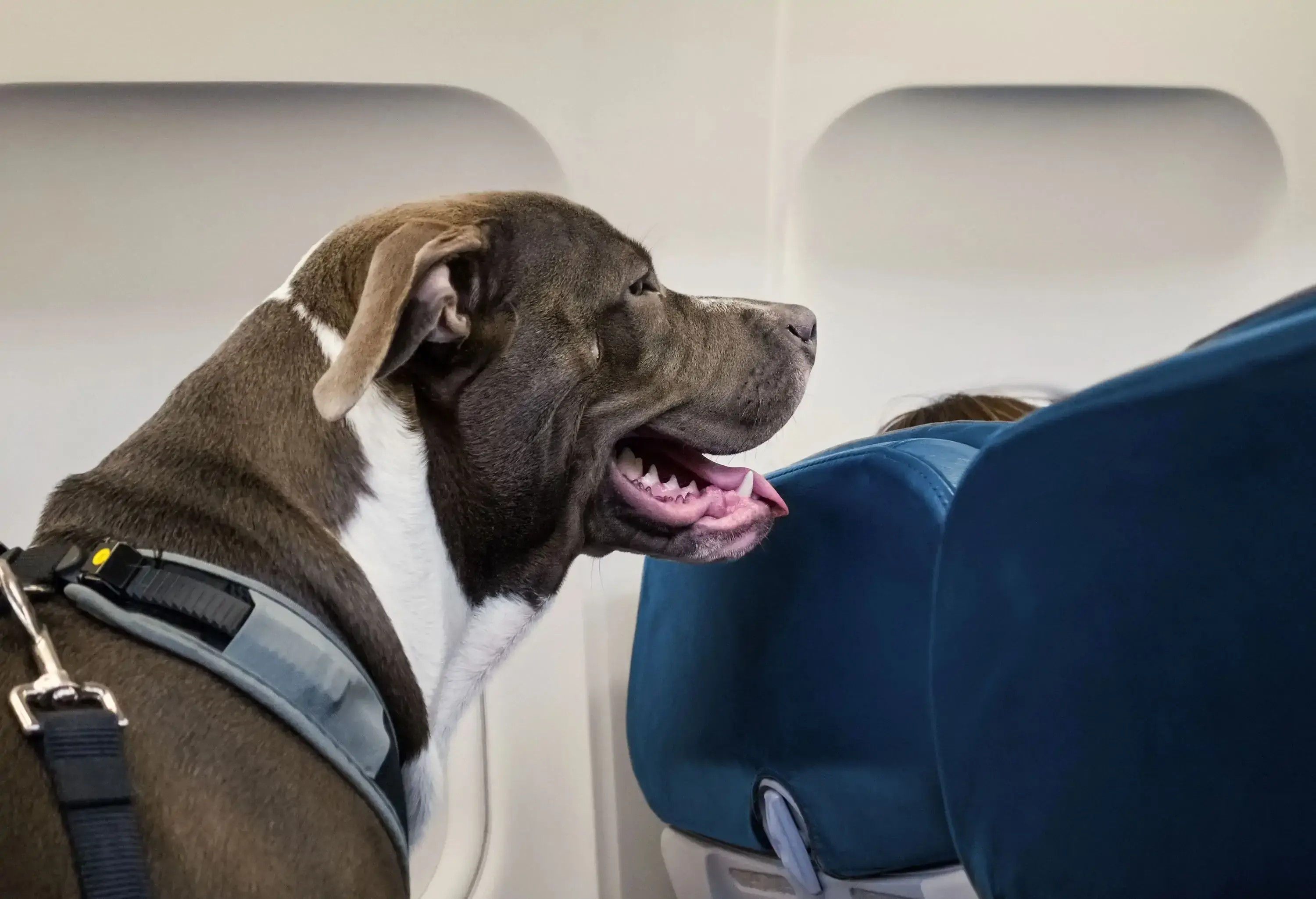
Individual countries and airlines determine their own regulations about access for assistance dog teams, and some may only allow access for teams that were trained and certified by an ADI Accredited Member organization. But below are some useful airlines that allow service dogs that have been trained by IGDF or ADI.

